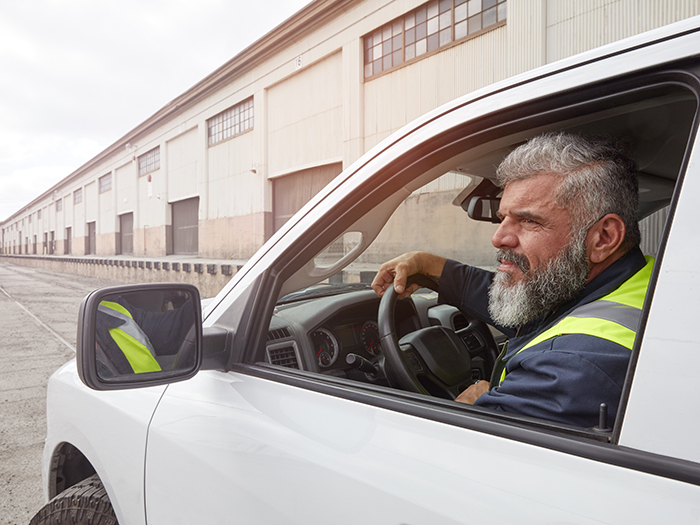Sponsored: Arch Insurance Company
Don’t Overlook Non-owned Auto Exposures: How Employers Can Manage Risks When Employees Drive Personal Vehicles on Company Business

It may seem like a casual request. A construction crew needs materials — additional lumber, or a specialized part. Someone goes out to purchase the item and takes their personal pickup truck. Or a field supervisor regularly drives their personal truck for company business between job sites.
Employees in all different types of industries use personal vehicles for company business all the time. Most companies offer employees who regularly need to use their personal vehicles for work-related tasks a monthly allowance or mileage-based stipend to help offset the costs of owning, maintaining and procuring insurance for that vehicle.
The practice is common, yet many employers don’t consider the liability risks of allowing or even requiring workers to use their personal vehicles for company business. Should a worker have a covered at-fault accident, the driver’s personal auto liability insurance policy will cover property damage and injuries to the other party — up to the limit of liability insurance purchased by the worker. After that, the employer’s commercial auto policy will typically respond, since the vehicle was being used in a business capacity. Most commercial auto liability policies are written to provide coverage for “any auto,” or all “owned” “hired” “scheduled” and “non-owned” vehicles. The intent is to ensure that the employer has coverage in place concerning any vehicle used in their business.
“One severe liability accident can result in millions of dollars in loss,” said Greg Stefan, senior vice president of Risk Control casualty with Arch Insurance. “$150 million in actual damages, $900 million in punitive damages: That can put a company out of business.” This is no longer an unrealistic verdict in a severe auto liability case, as evidenced by a recent $1 billion verdict out of Florida, one of the largest in the history of the country. Employers need to manage every vehicle and every driver operating on their behalf, which includes all owned vehicles as well as personal vehicles used for business purposes.
These risks, known as non-owned auto liabilities, can leave a business vulnerable to litigation and result in high-dollar auto liability claims, ultimately pushing up its commercial auto rates. As social inflation and nuclear verdicts continue to increase the costs of individual auto liability claims, employers “need to manage the risk of using an auto for their business regardless of whether their drivers are in a company-owned vehicle or in their personal vehicle,” Stefan said.
The Scope of Non-owned Auto Usage

Greg Stefan, Senior Vice President of Risk Control Casualty, Arch Insurance
Employees have long used personal vehicles to complete work-related tasks. But with the prices of commercial auto insurance policies forever increasing, some employers may be transitioning away from using company-owned vehicles toward employee-owned ones.
“This is not a new exposure; it’s been around forever, since there’s been commercial insurance available,” Stefan said. “But more and more employers seem to be making the choice to get out of the business of owning vehicles and simply reimbursing their employee drivers to use their personal vehicles for company business.”
Commercial auto liability rates and associated premium are based primarily on the number and types of vehicles being insured. Other factors — such as radius of operations, commodities being hauled and employee driver motor vehicle record histories — are factored in. Of even greater significance is the claim history of the employer: Insurance carriers are often looking at 5 to 10 years of claim history when quoting new and renewal business.
An employer who reduces its total vehicle count in favor of placing drivers on allowance in their own personal vehicles may have an up-front reduction in total premium due to the lower vehicle count. However, if not properly managed, the back-end result of severe liability claims involving these personal vehicles can have a lasting impact on their insurance program.
“What that’s functionally doing is reducing the sheer volume of power unit count. That is what the insurance carrier is primarily basing the rates on — that plus, obviously, the claim history,” Stefan said.
If a worker has an accident that causes damages in excess of their personal auto liability policy limits, the claim against their employer’s commercial auto liability policy can still dramatically push up commercial auto rates. In some severe cases, plaintiffs’ attorneys accuse employers of gross negligence, leading to punitive damage that may not be covered by an insurance policy.
“Many employers don’t understand that they are not reducing their liability simply by removing a company vehicle and having an employee drive their personal vehicle for business purposes. In fact, depending on the circumstances, they may exacerbate their liability,” Stefan said.
Non-owned Auto Liability Risks
The risk of a claim from a non-owned vehicle exceeding an employee’s personal policy limits is fairly high in today’s claims environment. The cost of auto claims has increased over the past few years as vehicles have started to include more sophisticated safety technologies that cost more to repair or replace if damage occurs.
“Look at all the technology that’s in a vehicle now. If you have a slight rear-end collision, you’re not just damaging a bumper; you’re damaging rear cross-traffic sensors; you’re damaging backup cameras; you’re damaging a lot of technology,” Stefan said.
In addition to the increased cost of repairing a damaged vehicle, workers and their employers might face litigation if another driver was injured during the accident. Over the past few years, social inflation and nuclear verdicts have plagued the commercial auto sector, resulting in skyrocketing claims costs.
Losses can be so extreme they exceed the driver’s personal auto limit and the carrier’s primary limit, pushing costs into the excess layers of insurance.
“It ends up being a triple whammy,” Stefan said. “If you have a significant amount of claims, what’s going to happen to your rates? The excess carriers do not anticipate getting many claims in their layer. If an employee driver has a bad accident, $50,000 from the driver’s personal auto liability policy goes first, then the employer’s auto liability deductible goes second, then the insurance carrier’s primary commercial policy limits come into play next. If damages go way above that policy limit — and they do all the time — then all of a sudden, you’re impacting the excess layer of insurance.”
If that wasn’t bad enough, employers may find themselves charged with gross negligence. For example, a plaintiff’s attorneys may allege that a business owner knew about an employee’s poor driving record and failed to prevent them from driving for the company in a non-owned vehicle.
“Consider how a plaintiff’s attorney would look at that scenario,” Stefan said. “You as the employer knew you had a problem driver due to the poor MVR [motor vehicle record]; you chose to correct that problem by moving the driver out of a company vehicle and putting them on an allowance to use their own vehicle, and then you did not take appropriate corrective or disciplinary actions to manage that driver. This could be the worst-case scenario for the employer, leading to claims of gross negligence.”
Managing the Risks of Personal Vehicle Use
Due to the liability risks associated with these types of claims, businesses need to take a proactive approach when employees are driving their personal vehicles for company business. Many employers already closely monitor vehicle maintenance and driving records when employees drive company owned vehicles; they should do the same for non-owned autos.
“If I’m an employer, I’m doing my due diligence on all these people driving company vehicles. I’m running motor vehicle record checks. I’m making sure there’s proper maintenance on the vehicle. I’m providing driver training and monitoring their performance using available technology. I’m doing all these things because I own the vehicle and they’re driving it,” Stefan said. “An employer needs to view an employee driver in a company vehicle the same way they view an employee driver in a personal vehicle when it comes to the types of controls that should be in place.”
Arch Insurance recommends that employers draft policies outlining what types of personal vehicles a worker can use to complete company tasks. They should also instruct employees to complete routine maintenance on any automobiles used for work. It can be difficult to mandate workers upgrade their personal vehicles to include telematics systems, but employers can encourage them to use the latest safety features, including apps that prevent cellphone use when a vehicle is in motion.
“A company that’s managing this correctly is going to have caveats on the type of vehicle that the employee can use, the age of the vehicle, and who can be a passenger or even operate the vehicle while on company business. There’s typically going to be some kind of policy requirement that they maintain the vehicle per the manufacturer specifications,” Stefan said.
Additionally, employers should be checking their drivers’ motor vehicle records. In the past, an employer might have pulled an MVR once or twice a year, but that won’t cut it in today’s environment. Now, companies should be using continuous MVR monitoring systems that notify them whenever an employee has negative activity on their motor vehicle record.
“If the driver has a poor MVR history, that is going to be one of the first things that comes out in a liability suit,” Stefan said. “By using available continuous MVR monitoring services, any time there’s a negative activity on their driver’s MVR, the employer gets notified automatically.” Too many employers do not include non-owned drivers in the MVR review program — a horrible mistake for the employer.
Beyond outlining clear policies for vehicle use and monitoring driver records, businesses should require company drivers who drive non-owned vehicles to purchase a certain amount of personal auto liability coverage. That way, damages are less likely to exceed the personal auto liability policy limit and fall on to the employer’s commercial auto liability policy. Stefan advises employers to require their drivers to purchase between $300,000 and $500,000 in personal auto liability limits.
“A huge percentage of the driving population only purchases what is legally required in the state that they drive for insurance limits. In certain states, that might be less than a $50,000 liability policy,” Stefan said. “Make sure that the driver has an appropriate limit of personal insurance.” That personal liability limit may be the only thing that prevents a liability claim from coming onto your records, which will have a drastic effect for years to come.
To learn more, visit: https://insurance.archgroup.com/.
![]()
This article was produced by the R&I Brand Studio, a unit of the advertising department of Risk & Insurance, in collaboration with Arch Insurance Company. The editorial staff of Risk & Insurance had no role in its preparation.










